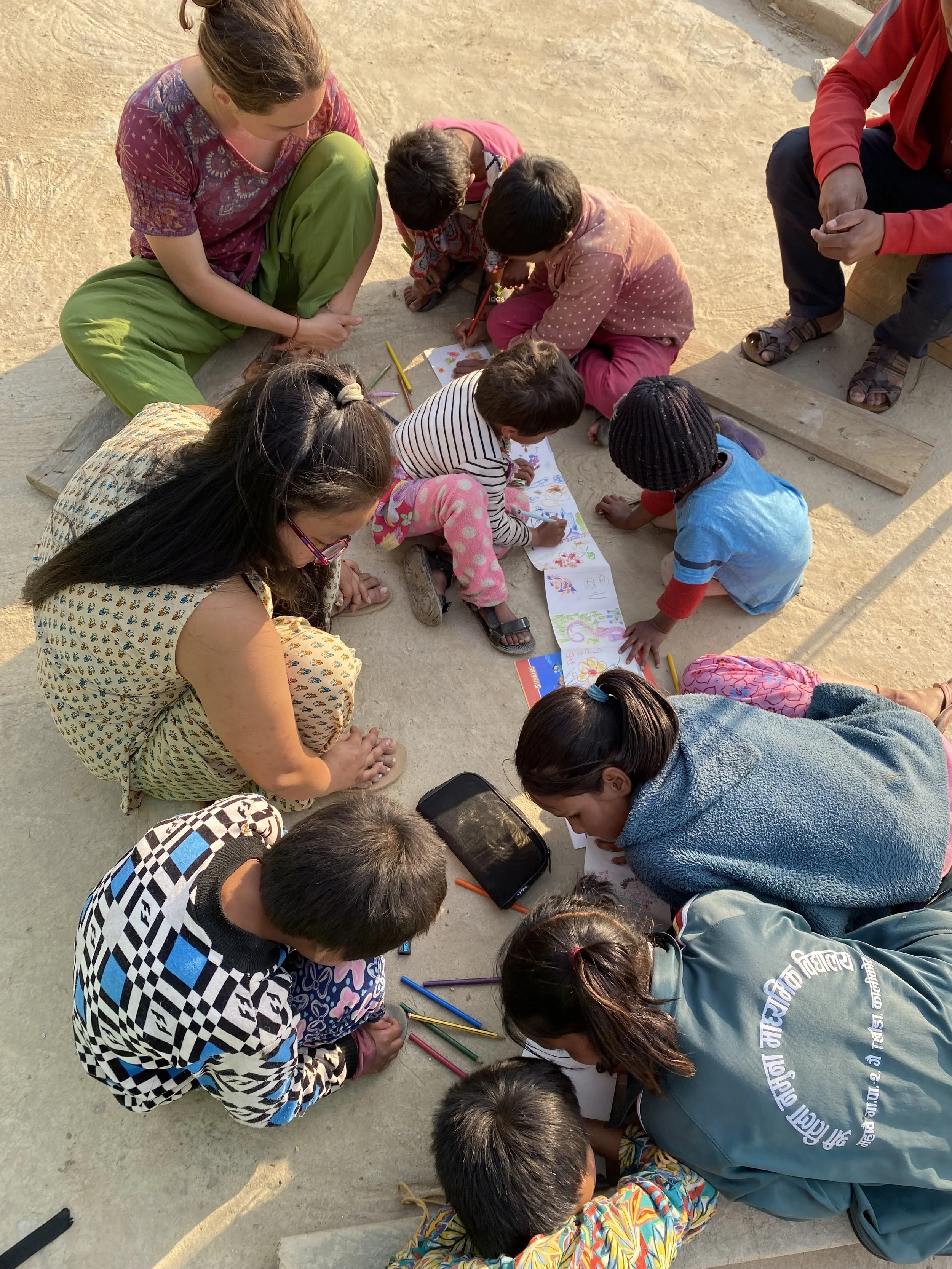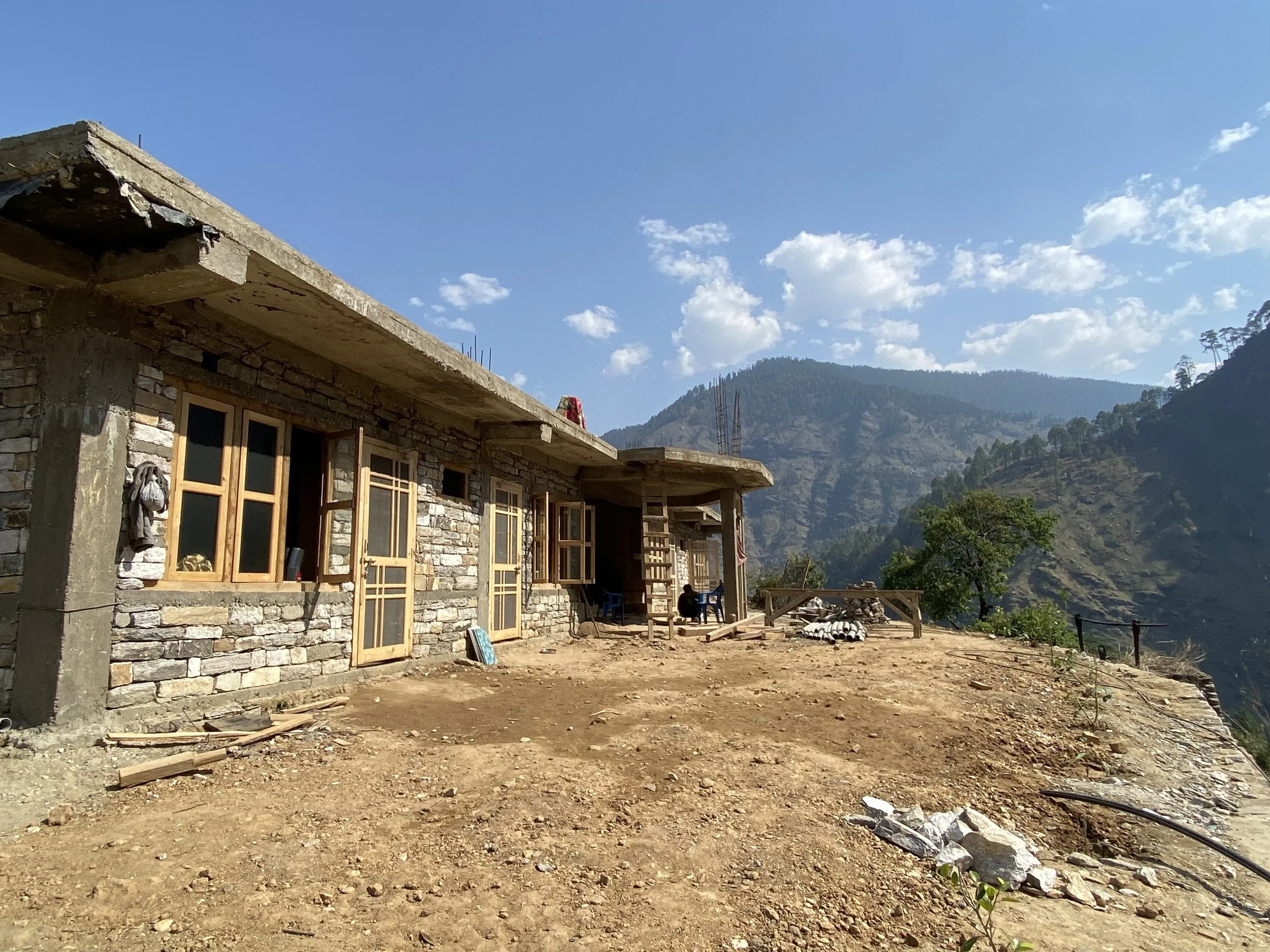Volunteering in Oda
Living in Oda and volunteering with the Pradiya Foundation was one of the most incredible things I’ve ever done and a more challenging experience than I had expected.
Our days consisted of helping with the construction of the home/community center in the mornings, hanging out with the kids in the afternoons once they got back from school — playing games, drawing and coloring, teaching English — and hiking down to the river at the base of the mountain for a cold plunge whenever possible.
A few days we went for hikes with the kids to some spots in the mountains where these wild berries grew (known as Kaaphal). The kids would climb the trees to pick the ripest ones they could find. And we’d make sure to bring an empty water bottle with us to fill up and bring berries back to share.
The majority of the kids in the foundation’s care are young girls ranging from ages 4-12. They spoke very limited English and we didn’t speak any Nepali outside of a few recently learned words, so our communication was shared in other ways. And the other volunteer with us, Hari, spoke Nepali so she was able to translate many things between us and the kids.
Oda village is etched into a mountainside, surrounded by and expanded through terraces that surround every view point. The mountains were absolutely breathtaking. And it was even more breathtaking that people lived in such a remote location, their way of life having been shaped alongside that of the mountains. The landscape there had this vast powerful presence — so full of life, the Earth’s essence still preserved, untouched by the modern world.
It’s a very old village where traditional agriculture is still lived. We got to witness the practices we learned at Navdanya farm in action – sorting and drying harvests, seed threshing, animals central to plowing fields, providing compost and fertilizer, and providing milk.
There are fresh spring taps in and around the village for drinking water and a river that runs through the base of the mountain where people bathe and wash their clothes. The houses are built in traditional ways — walls constructed from mud and cow dung, windows and shutters formed from wood. And there is an abundance of wild greens and edible berries around with a mix of pine forests and lush, dense, rainforest-like forested areas.
The new home/community center under construction! Build with local materials and traditional mud plaster walls.
It’s also a very impoverished area. The traditional houses are very simple and there is no running water in any of the homes – so none of them have actual bathrooms (except for the few that have been funded and built by the Pradiya Foundation). People gather drinking water from the taps each morning to use throughout the day. The schools are greatly lacking and while it was so beautiful to see the traditional agricultural practices, it was also very apparent that agriculture is practiced as a means of survival.
There is little to no income in the village. Most jobs available are outside the village and provided by the government to pave and build guard rails for the road that leads to this region. It’s very labor intensive as much of that work involves breaking rocks for the construction.
There are also a few cultural challenges.
The caste system is very present there. There is a clear separation between the upper and lower castes where the upper caste lives in the central part of the village and those in lower castes live on the outskirts. People in the upper caste don’t share anything with those in lower castes — they don’t touch the same food or drink from the same water source. And they most certainly don’t associate with one another (even though those in the lower castes are the craftsmen, musicians, artists, builders — and they provide services and goods for the upper castes). And while women are often the ones who run the household, young boys are more valued and desired than young girls.
People get married VERY young — often before 16 — and at their own will, not because it’s arranged or forced. They then have kids at a very young age. So there are many families with 6-8 kids living under one small roof, and limited resources to be able to provide for all of their children. These couples also often separate and seek new partners, leaving kids behind to be cared for by extended family members who themselves are faced with struggles to be able to properly provide.
I witnessed a lot in this village. I noticed that while it might be lacking in many ways, it is overflowing with an abundance that many people can only dream about — and is also an abundance that cannot be found in today’s modern world. We’ve traded this connection to the Earth with a culture and an economic system that relies on extraction. And we then have adopted and accepted the story that the only way to live is by destroying the very planet we rely on to survive, while convincing ourselves that the resources and materials required for survival can be replicated through technology. It’s incredibly backwards.
I witnessed how a place so remote as this is still been plagued/touched by such darkness as the caste system and I feel hopeful for the transformation and awakening that can be provided by work such as that of Pradiya Foundation.
I feel incredibly grateful for this experience.
Unfortunately, Indianna and I had to leave the village much earlier than expected. We both got a bit sick with diarrhea and felt the best thing for both of us was to continue our travels elsewhere. But this is an experience I will never forget — and an organization I am excited to continue supporting from afar.





